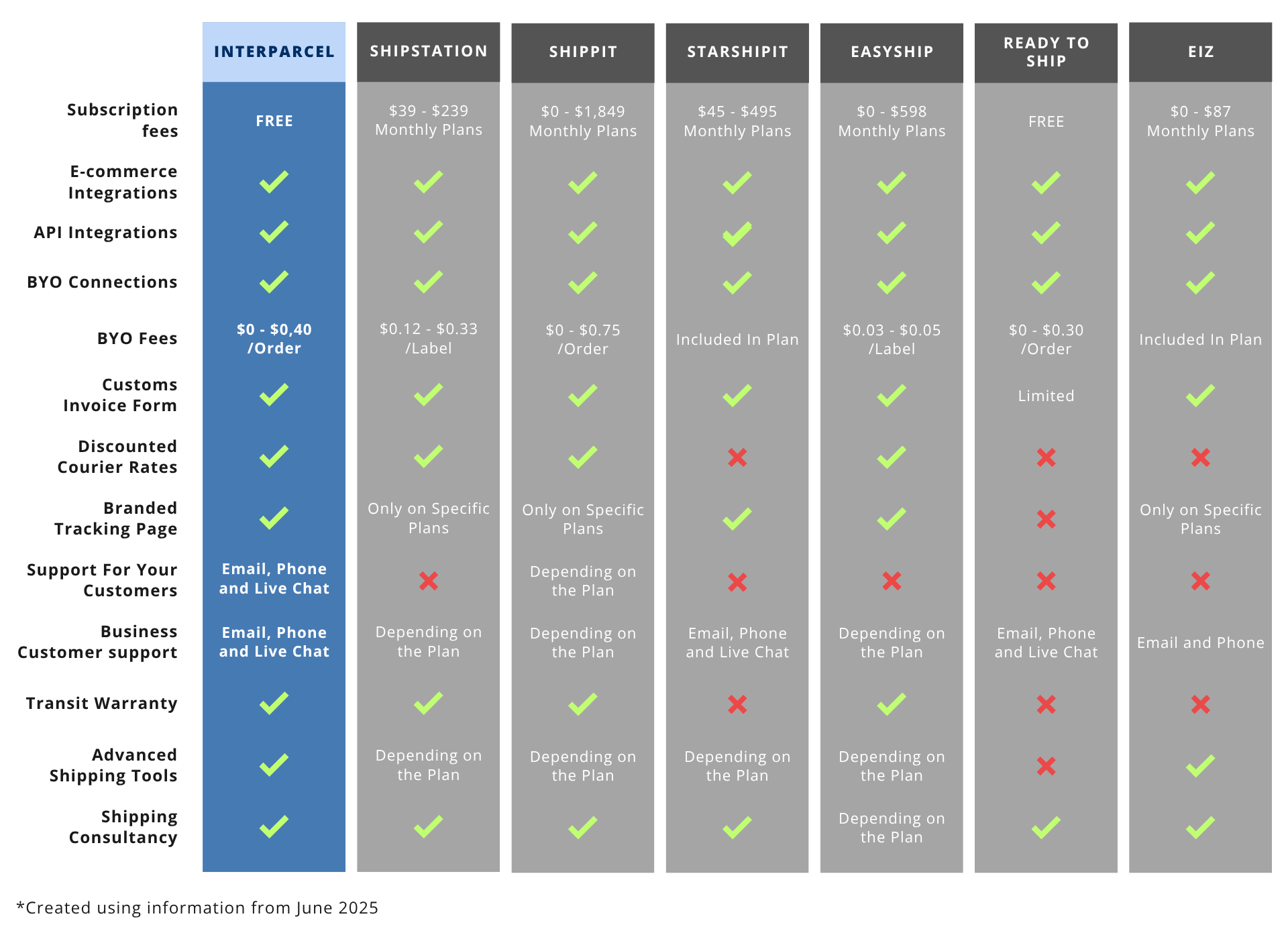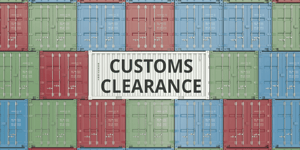Choosing shipping software feels harder than it should, right?
Orders are piling up. Customers are waiting. A hundred other things are screaming for your attention.
But here’s the thing. You can’t properly focus on growing your business until shipping runs smoothly. You need it handled. On autopilot.
That’s where the right software comes in.
You need something that clicks. A solution that feels simple. One that works without fuss, so you can get back to doing what you actually love about running your business.
The good news? Finding the right software is easier than you think.
In this article, we’ll show you exactly what to look for, what to avoid, and how to make a smart decision quickly.
Step 1: Define Your Shipping Needs and Goals
Before you jump into comparing platforms, pause for a second.
Because here’s the truth.
No two businesses are the same. Neither are their shipping needs.

What works brilliantly for someone selling handmade candles won’t cut it for a store sending bulkier products across the country.
So, start with you.
Ask yourself the tough questions.
What’s not working right now?
Are parcels taking too long to leave the warehouse?
Are customers chasing up tracking details?
Are shipping costs quietly ruining your profit margins?
Write it down. Not mentally. Physically. Use a notepad or type up a simple list. When it’s right there in black and white, patterns appear.
Think about:
- How many orders do you ship weekly or monthly?
- Are most orders domestic or international?
- Do you sell across multiple platforms like Shopify, eBay, or Amazon?
For example…
If you’re shipping over 100 orders a week, mostly internationally, and selling through Shopify, that already defines what you need in a shipping platform.
You’ll need something that:
- Integrates seamlessly with Shopify to automatically pull orders
- Offers multiple international couriers to cover key destinations
- Provides standard and express delivery options so customers can choose speed or savings
- Delivers reliably to protect your brand’s reputation
Clarity here matters.
Because shipping software isn’t one-size-fits-all. You want exactly what makes your life easier.
Nail your needs now, and comparing options later becomes ten times easier.
Step 2: Research and Create a List of Top Software Providers
Alright, now you know what you need. Next step? Scout the market.
Spoiler: There are a lot of options. And at first glance, they all sound kind of similar.
Multi-carrier shipping platforms, automating your shipping processes, a platform thats easy to use, etc.
That’s where your clarity comes in. Now you can quickly separate the contenders from the pretenders.
Pull up Google and search for "shipping platforms".
Shortlist five to ten providers that:
- Support the couriers you care about
- Offer integrations with your store and marketplace
- Don’t lock you into a long-term contract
- Provide transparent pricing (nobody likes surprises)
But don’t stop there.
Dig deeper. Check their reviews. Not the ones on their website, real reviews on independent sites. Look for patterns in what people say.
Are users raving about fast fulfilment?
Do they mention hidden fees or clunky setups?
Is support helpful or non-existent?
This research step matters more than you think. Surface-level browsing leads to surface-level decisions. Go deeper now to save headaches later.
Step 3: Compare Key Features Side-by-Side
Here’s where it gets serious.
By now, you should have a shortlist. Time to put them head-to-head.
Grab a spreadsheet or piece of paper. Create a simple table. Across the top, list the shipping software names. Down the side, add must-have features. Start with these:
- Number of couriers supported
- Available integrations (Shopify, WooCommerce, eBay, etc.)
- Pricing model (flat fee, subscription, shipping rates only)
- International shipping capabilities
- Branded tracking and post-purchase notifications
- Support access (phone, email, live chat)
To make things easier, we’ve done some of the legwork and compared a few of the leading shipping platforms for you.

This side-by-side visual shows how different platforms stack up across the features that matter most, so you can skip the guesswork and spot the right fit faster.
Use it to eliminate options that fall short, and focus only on the platforms that match your must-haves. A clear visual comparison is often what turns a maybe into a confident yes.
Step 4: Test or Demo Your Top 2-3 Options
This is the step most people skip and regret later.
Because everything looks good on paper. Until it doesn’t.
That’s why you need to get hands-on.
Sign up for free trials. If there’s no trial, request a demo. Speak to someone. Get under the hood.
Here’s what to pay attention to:
- How easy is it to connect your store?
- Can you import orders without hassle?
- How quickly can you compare courier rates and book shipments?
- Is tracking information simple to access and share?
Picture your busiest day. Ten tabs open. Phones ringing. Does this software make things easier… or add to the chaos?
During testing, don’t just focus on features. Focus on feel.
If it feels clunky, confusing, or slow now, it’s not going to magically get better when you’re in peak season rush mode.
Also, test customer support. Yes, during the trial.
Shoot them a simple question and see how fast and helpful the response is. In shipping, things go wrong. When they do, you’ll want help. Fast.
Testing will reveal insights no website comparison ever could.
You’ll either feel like "Yes, this clicks" or "Nope, too hard."
Trust that feeling.
Step 5: Check Pricing and Calculate ROI
Time for the money talk.
By now, you should have a favourite. Maybe even two.
But before you fall head over heels, let’s make sure it makes financial sense.
Shipping software pricing models can be sneaky.
Some lure you in with low base rates but hit you with add-ons.
Here’s what to check:
- Is it pay-per-shipment or a fixed monthly fee?
- Do they offer customised rates based on your volume?
- Are there extra charges for integrations or premium features?
- What’s included in your base rate?
- Will you save on courier rates by using the platform?
To help you run the numbers, here’s a breakdown of estimated monthly costs for different platforms based on order volume. These don’t include shipping itself, just platform and BYO courier fees where applicable.
| Platform | 500 Orders/Month | 2,000 Orders/Month |
|---|---|---|
| ShipStation | $39 + $165 BYO Fees* = $204 | $99 + $400 BYO Fees* = $499 |
| Shippit | $524 | $699 |
| Interparcel | $0 + $50 BYO Fees* = $50 | $0 + $140 BYO Fees* = $140 |
*BYO Fees apply if you use your own courier account instead of the platform’s discounted rates.
Use this as a starting point to estimate your total monthly costs. Then ask yourself, does the platform save you time, streamline your workflow, or improve customer satisfaction?
Sometimes, saving $100 on software costs you double that in wasted hours. But the right platform will pay for itself many times over in time saved, fewer errors, and happier customers.
Step 6: Make Your Decision and Next Steps
You’ve done the work.
You’ve asked the questions, compared the options, tested the tools, and crunched the numbers.
Now, don’t overthink it.
The best software isn’t perfect. It’s the one that fits your business now and gives you room to grow.
Once you’ve chosen, take action.
Contact their team. Get set up properly. Ask about onboarding and training if they offer it.
Then, integrate it fully with your store and automate where you can.
Make it part of your day-to-day so shipping runs quietly in the background, just like it should.
You’ll know you’ve made the right decision when your day feels lighter. You’ll experience fewer fires to put out, happier customers, and more time to focus on growing your business instead of babysitting fulfilment.
If you're a small or medium-sized ecommerce business, we recommend you use Interparcel. It’s built for growing brands that need flexibility, with no subscription fees or lock-in contracts, and automation tools that can cut fulfilment time by up to 85%. For businesses that want to keep shipping simple and costs down, it’s often the perfect fit.
Stop Letting Shipping Steal Your Time (And Sanity)
You didn’t start your business to become a shipping manager. You started it to bring your ideas to life. To make customers happy. To create freedom for yourself.
But let’s be honest. Somewhere along the way, shipping snuck in and hijacked your day. You spend more time chasing couriers, fixing addresses, and answering “where’s my order?” emails than doing what actually lights you up.
It’s draining. It’s frustrating. And at times, it feels like it will never change. Shipping should work for you, not the other way around.
And now, you know exactly how to make that happen.
You know what to look for. You know how to compare. You know about platforms that exist to make all this simpler, faster, and far more affordable, without locking you into anything.
You’re ready. Your business is ready. Now go make shipping easy.










 Facebook
Facebook Twitter
Twitter Instagram
Instagram Linked In
Linked In YouTube
YouTube